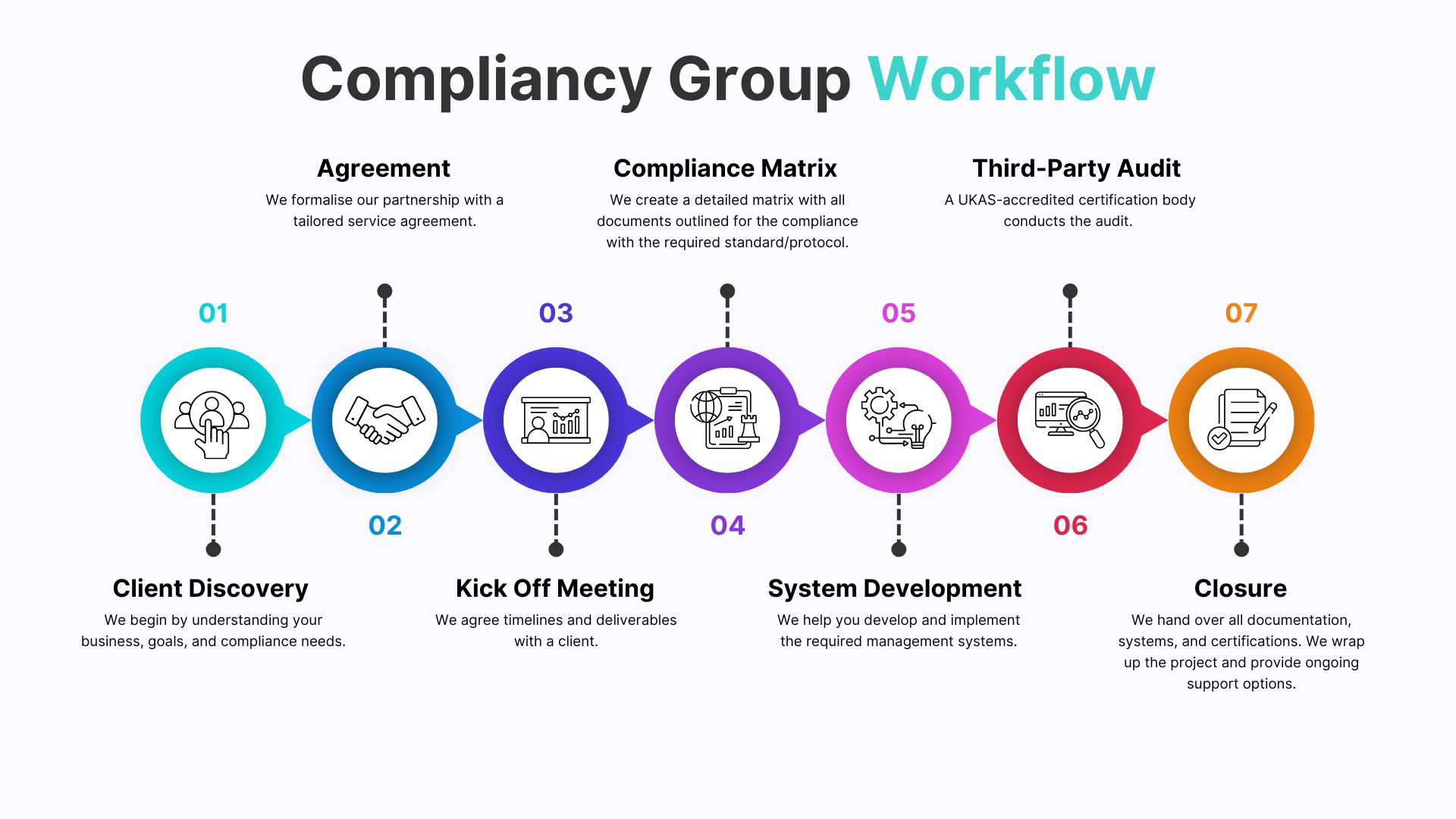We're Here To
Help
A Personal Protective Equipment (PPE) Assessment is a focused inspection designed to evaluate the selection, use, and maintenance of PPE in your workplace. Completing a PPE assessment demonstrates your business’s commitment to employee safety, legal compliance, and proactive risk management – trusted by clients, partners, and regulators across all sectors. With robust PPE management, you protect your workforce from hazards, reduce the risk of injuries, and show you value your team’s wellbeing. Compliancy Group guides you through every step – making PPE compliance clear, practical, and a genuine business advantage.
We understand the challenges of ensuring proper PPE usage and complying with current regulations. Our team brings hands-on experience with PPE assessments, control measures, and industry best practices.
No one-size-fits-all here. Whether you need an initial assessment, policy development, staff training, or ongoing compliance advice, our services are fully customised to your operations. We offer flexible support packages—from essential guidance to comprehensive on-site consultancy.
We work exclusively with UKAS-accredited certification bodies and maintain a 100% pass rate for compliance assessments. Our clients trust us to deliver results that stand up to audit and regulatory scrutiny—helping you achieve, maintain, and leverage PPE compliance for business growth.
Compliance shouldn’t slow you down. We help you build safer environments, reduce risk, and improve operational efficiency—so you can focus on your core business.
You’ll work directly with our expert team, including leadership involvement from our CEO. We pride ourselves on responsive communication, clear guidance, and ongoing support throughout your compliance journey.
Demonstrate compliance to secure contracts and reassure clients, staff, and regulators.
Show your commitment to workforce safety, wellbeing, and legal responsibilities.
Minimise the risk of workplace accidents and costly liabilities.
Enhance your standing as a responsible and trusted employer.
Regular assessments and compliance checks foster a culture of ongoing safety and operational excellence.
Strengthen Reputation
From initial assessment to ongoing support, our team ensures you’re always prepared and confident.
We streamline compliance processes, freeing up your team to focus on core business activities.
Services are tailored to your specific business needs, not generic templates.
Ongoing support, training, and regulatory updates keep your business compliant long after inspection.
Our 100% compliance pass rate and exclusive partnerships with UKAS-accredited bodies mean you’re in safe hands.

The PPE Hazard Assessment form can be used to determine the required PPE by identifying the hazards of performing the task and selecting appropriate PPE. The form is grouped according to the body part protected by specific types of PPE. The form can serve as a written certification of the PPE Hazard Assessment.
1.To conduct a PPE assessment. Conduct a walk-through survey of the areas in question. ... 2.Complete the Worksheet. ... 3.Selection of Personal Protective Equipment (PPE) ... 4.Specialized PPE: Respiratory Protection, Hearing Protection, Electrical PPE, and Fall.
As a general rule of thumb, it is best practice to inspect your PPE before each use, as well as at regular intervals throughout the working day. For high-risk workplaces or environments, or for PPE that is subjected to frequent use or harsh conditions, more frequent inspections may be necessary.
The frequency of a PPE hazard assessment will depend on the type of work, environment, and equipment being used. Generally speaking, employers should conduct regular assessments. This is, so their workers are adequately protected from any potential hazards.
Your employer should carry out a suitable and sufficient risk assessment which will identify if and when PPE is required for where you work, for example patients' own homes.
PPE must be suitable, well-maintained, and correctly fitted for each individual. Employers must provide adequate training on PPE use and ensure workers understand how to use it properly. PPE must be regularly inspected and replaced if damaged or worn out.
All PPE must be correctly labelled, delivered with user instructions, and carry the CE mark. A manufacturer of PPE must ensure that the products it brings to the market comply with relevant requirements. This is done by issuing a Declaration of Conformity for all personal protective equipment.
PPE intended to protect workers from exposure to toxic substances or harmful physical agents should be inspected before each use for damage that could compromise safety.
PPE Inspections: Importance and Frequency Common guidelines recommend a daily visual check, detailed weekly inspections, and a comprehensive monthly evaluation. Daily Visual Checks: Before each use, inspect for visible defects. Users should spot wear, damage, and dirt that might impair